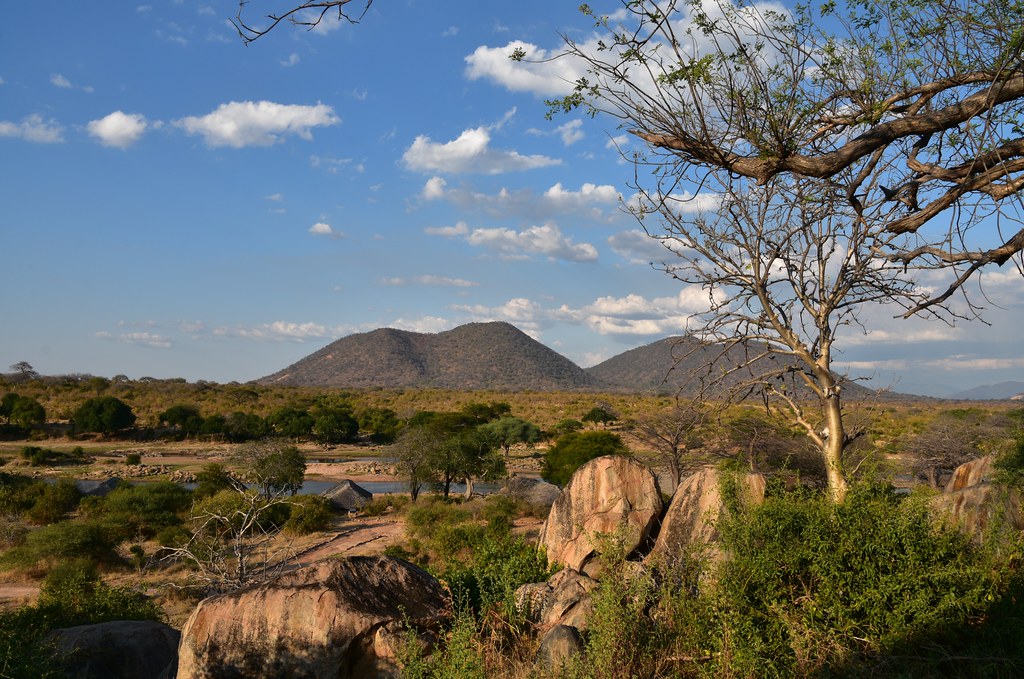Where to Visit in Tanzania – Best Safari Destinations in the Heart of East Africa
Tanzania is one of Africa’s most iconic safari destinations — a country where wildlife roams freely across vast plains, volcanic craters, and pristine wilderness. From the legendary Serengeti to the tropical shores of Zanzibar, Tanzania offers an endless variety of experiences for every traveler. Whether you’re chasing the Great Wildebeest Migration, watching flamingos dance on soda lakes, or relaxing under palm trees by the Indian Ocean, Tanzania’s beauty unfolds in many unforgettable ways.
Serengeti National Park – The Land of Endless Plains
No safari to Tanzania is complete without visiting the Serengeti National Park, a UNESCO World Heritage Site and one of the most celebrated wildlife reserves in the world. The word “Serengeti” means endless plains in the Maasai language — and that’s exactly what you find: sweeping grasslands stretching to the horizon, filled with life.
The Serengeti is world-famous for the Great Wildebeest Migration, an awe-inspiring spectacle where over 1.5 million wildebeests, accompanied by zebras and gazelles, move in search of greener pastures. Depending on the season, you can witness river crossings at the Mara River (July to September) or the calving season in the Ndutu plains (January to March).
Beyond the migration, the Serengeti teems with predators — lions, cheetahs, leopards, and hyenas — as well as elephants, giraffes, buffaloes, and countless antelopes. Game drives at sunrise and sunset reveal the drama of life and survival in Africa’s most famous park.
Ngorongoro Crater – Africa’s Eden
Just west of Arusha lies the spectacular Ngorongoro Crater, often described as the “Eighth Wonder of the World.” Formed from a collapsed volcano millions of years ago, this vast caldera is home to one of the densest concentrations of wildlife in Africa.
Descending into the crater is a breathtaking experience — you’re greeted by sweeping vistas, mist-covered rims, and open plains filled with animals. Inside, you’ll find lions lounging in the grass, elephants strolling near the Lerai Forest, and hippos wallowing in the Ngoitokitok Swamp. The crater floor is also one of the best places in Tanzania to spot the endangered black rhino.
The Ngorongoro Conservation Area is more than just wildlife — it’s also home to Maasai pastoralists who live in harmony with the natural environment, offering a glimpse into Tanzania’s cultural heritage.
Tarangire National Park – The Land of Giants
Often overshadowed by its famous neighbors, Tarangire National Park is one of Tanzania’s most underrated gems. Known for its towering baobab trees and large elephant herds, Tarangire is especially rewarding during the dry season (June to October) when animals congregate around the Tarangire River.
Here, you’ll witness vast herds of elephants walking in the golden light of late afternoon, giraffes feeding on acacia trees, and lions resting under baobabs. The park is also a birdwatcher’s paradise, with over 500 species recorded, including colorful lovebirds, hornbills, and martial eagles.
Tarangire’s peaceful atmosphere and rich wildlife make it an ideal start or end to a Northern Circuit safari.
Lake Manyara National Park – Tree-Climbing Lions and Flamingos
Nestled between the Great Rift Valley escarpment and Lake Manyara, this small but incredibly scenic park offers a microcosm of Tanzania’s ecosystems. Lake Manyara National Park is famous for its tree-climbing lions, a rare behavior not seen in many parts of Africa.
The park also supports large herds of elephants, hippos, buffaloes, and a kaleidoscope of birdlife. During the wet season, Lake Manyara becomes a shimmering pink spectacle, hosting thousands of flamingos and other waterbirds. The combination of dense forest, open plains, and Rift Valley cliffs gives the park a magical, intimate feel — perfect for shorter game drives or family-friendly safaris.
Ruaha National Park – Tanzania’s Hidden Wilderness
For travelers seeking a more remote and authentic safari experience, Ruaha National Park is Tanzania’s best-kept secret. Located in the heart of the country, Ruaha is one of Africa’s largest national parks yet receives fewer visitors than its northern counterparts.
Its landscapes are striking — rugged hills, dry riverbeds, and vast miombo woodlands that stretch endlessly into the horizon. Ruaha is renowned for its impressive predator population, especially lions and leopards, as well as large herds of buffaloes, elephants, and giraffes. The park’s isolation makes it a true wilderness escape, perfect for photographers and travelers seeking tranquility away from the tourist trail.
Selous Game Reserve (Nyerere National Park) – Africa’s Wild Heart
Now officially renamed Nyerere National Park, this immense reserve covers an area larger than Switzerland and remains one of Africa’s wildest places. It is centered around the Rufiji River, whose network of channels, lakes, and swamps provides lifelines for crocodiles, hippos, elephants, and buffaloes.
Selous offers a unique blend of safari experiences — boat safaris along the river, walking safaris through open plains, and classic game drives. It’s also one of the best places in Tanzania to spot wild dogs, one of the continent’s most endangered predators.
With its diverse landscapes and luxurious lodges tucked away in the wilderness, Selous provides an exceptional off-the-beaten-path experience for adventurous travelers.
Zanzibar – The Spice Island Paradise
After days of dusty game drives and wild adventures, few places are as inviting as Zanzibar. This tropical island off Tanzania’s coast is a paradise of white-sand beaches, turquoise waters, and rich cultural history.
Visitors can stroll through the narrow alleys of Stone Town, a UNESCO World Heritage Site, where centuries of Arab, Indian, and African influences blend seamlessly. Spice farm tours reveal the island’s aromatic heritage, while the coral reefs around Nungwi and Paje offer some of the best snorkeling and diving in the Indian Ocean.
Zanzibar is the perfect complement to a mainland safari — a place to unwind, swim, and soak in the warmth of the Indian Ocean.
When to Visit Tanzania
The best time to visit Tanzania depends on the experience you seek. The dry seasons (June to October and December to February) offer the best game viewing, especially for the Great Migration and classic safaris. The wet seasons (March to May and November) bring lush green landscapes and excellent birding opportunities, with fewer crowds and lower prices.
Each region offers something unique year-round — from calving season in the southern Serengeti to whale shark encounters off Zanzibar’s coast.
Why Tanzania Stands Out
Tanzania isn’t just a safari destination; it’s a world of natural wonders. From the sweeping Serengeti to the volcanic Ngorongoro Crater and the azure beaches of Zanzibar, it offers every element of the African dream. The country’s diversity — both in wildlife and culture — ensures that every traveler finds something magical.
Whether you’re a first-time visitor seeking the classic safari or a returning adventurer longing for new horizons, Tanzania invites you to experience Africa in its most authentic and unforgettable form.





